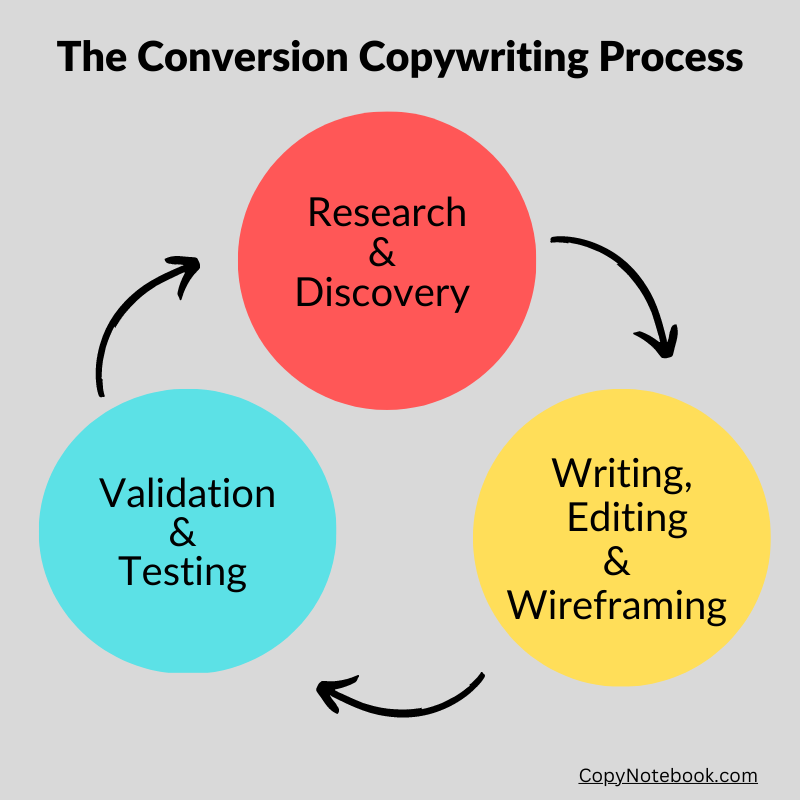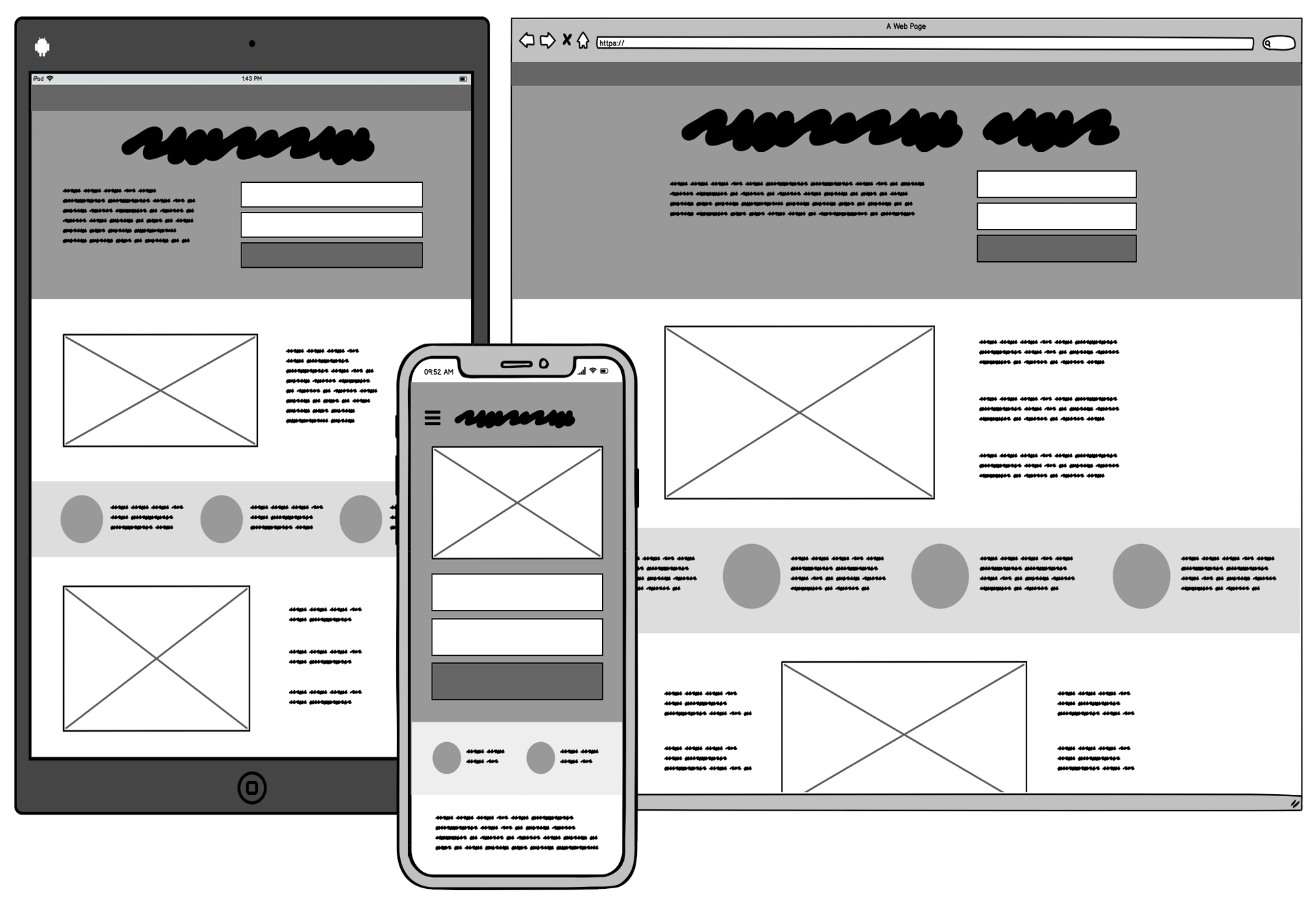Stop Panicking Every Time You Have to Write Copy! Learn The Proven Process Top Copywriters Use To Craft High-Converting Copy
Do you have to write your own copy and don’t know where to start?
Don’t waste time staring at the blank page. Follow the proven process pro copywriters use to write their copy every single time.
Why should you follow a process?
Efficiency is the more obvious reason. A process saves you time and effort in the long run. But there are other reasons you should consider:
- You benefit from someone else’s experience and knowledge.
- You gain clarity about your target audience's pains, wants, desires, and needs.
- A process ensures your copy is well-structured, consistent, and easy to read.
- It helps you stay organized and focused on your business objectives.
- Ensures your copy is based on thorough research helping you identify and address potential objections or questions your audience might have.
- You can replicate a process that works every time you need to write copy.
What process should you follow?
I'm going to guide you through the one I know, the Conversion Copywriting process. The process was designed by Joanna Wiebe, from CopyHackers. She coined the term conversion copywriting back in 2012. It means copy that moves the reader to “yes” using Voice of Customer data, frameworks, formulas, and proven persuasion techniques.
It’s a three-part cyclical process:
- Phase 1 - Research & Discovery
- Phase 2 - Writing, Editing, and Wireframing
- Phase 3- Validation & Testing
It’s cyclical because you do several iterations to optimize your copy.

Let’s see each part in more detail.
Phase 1 - Research & Discovery
You always start here.
In this phase, you discover your prospects’ pains, desires, wants, and needs using Voice of the Customer (VoC).
Voice of the Customer (VoC) is a research methodology that uses different techniques to capture customers’ expectations, wants, needs, and pains.
3 VoC techniques you can use:
- Online message mining. It is especially useful when you are starting a business and have zero customers. By reading customer reviews from products similar to yours, you learn what people love and hate, features they like and dislike, expectations they have, the benefits they talk about, and why they start looking for a solution like yours.
- Surveys. Surveys are a great tool to find sticky messages and message hierarchy. Two types of surveys can help you write better copy:
- On-site surveys. They are great for real-time feedback from people visiting your website. Use them on your homepage, landing page, success or thank you page, pages with high-exit rates, cancellation, downgrade, or churn pages.
- Email surveys. By sending a survey to your existing customers via email, you get to understand why people have bought from you in the past and the value they see in what you provide. The goal is to reveal outcomes, the big changes a customer experiments with your solution.
- One-on-one interviews. Target existing customers that have bought from you or have worked with you within the last six months. In the interviews, you are looking for insights from their experiences with the product.
Do you have to use the three techniques? No, you don’t.
When choosing the right VoC for you, consider your time and resources. Here you have some guidelines:
- Limited time (less than ten hours) and budget. Choose message mining. You can gather a lot of insights just by doing that. It’s also the best option if you don’t have any customers or traffic to your site. Forget about surveys and interviews.
- More time, budget, and enough customers. Add surveys (on-site and email) to the mix. You need around 20-200 surveys to get some compelling responses. A good rule of thumb is to aim for at least 100 replies.
- Plenty of resources at your disposal. Add one-on-one interviews. You will need at least one hour per interview and time to organize and analyze the results. Three to five successful interviews may be enough to gather the insights you need.
Phase 2 - Writing, Wireframing, and Editing
Research is around 80% of the work. With your research at hand, you now have enough insights into your prospects’ pains, needs, desires, and wants.
Start your copy where you feel more comfortable (headline, bullet points, call to action, your offer.)
Use a copywriting formula to help you organize your messages. Let's see a couple of common formulas:
AIDA (Attention Interest Desire Action)
Attention. Grab the reader’s attention with your headline or subject line.
Interest. Keep the reader engaged. Give them a reason to keep reading.
Desire. Help your reader understand how your product is going to make their lives better.
Action. Prompt them to act right now. Make it easy for them to take action.
PAS (Problem Agitation Solution)
This formula is great for pain aware prospects.
Problem. Start by describing the problem. Name the pain and make it tangible.
Agitation. Agitate that problem by highlighting the emotions that go with it and reminding them of how bad their situation is.
Solution. Finally, present the solution, your product.
Even though PAS has no action at the end, you should always have one.
Or the simplest copywriting formula of all.
- What I’ve got for you
- What it’s going to do for you
- Who I am
- What you need to do next
If you are writing a sales page or a landing page, think about how the information is going to go on the page. Take your copy and organize it visually so a designer can use it to work on the design of the web page. This process is called wireframing.
A wireframe is a visual guide to elements on a page. It conveys layout, content, and functionality, but it does not convey design.

Once you have your first draft, it's time to edit it. Editing involves several stages:
• Edit for grammar and spelling.
• Edit for scanners.
• Edit for messaging.
• Edit for clarity.
• Edit for believability.
• Edit for heightened emotions.
• Edit for zero risk.
The right way to edit is in stages. Start with the grammar and spelling check. Then, move on to the next stage. Finish the editing process with one last edit for clarity. Always make sure your copy is clear because clarity trumps almost everything.
Phase 3- Validation & Testing
Copy validation and testing tell you if your copy is on the right track. Validate and test to assess its clarity, specificity, and relevance.
Here are 5 ways to do it:
5-Second Test
Take a screenshot of your hero section and do a 5-second test with it. You place your screenshot in front of the test participants for five seconds. Then, you remove the image and ask them a few simple questions. You will get feedback on what the readers perceive when they see your page for the first time.
Cloze Test
A cloze test measures how well the readers understand a piece of text through context and previous knowledge. You present a 125 to 250-word text to the test participant removing one word every 5 or 6 words and replacing it with a blank line. The participant must insert the missing words in the blanks relying on context and prior knowledge of the subject. Use it to know if your copy is right for the intended audience.
Highlight Test
In a highlight test, you ask participants to highlight the content that makes them feel confident in one color (green, for example) and the content that makes them feel uncertain in a different color (orange). Use it to see how your copy emotionally resonates with the users.
Usertesting
Usertesting.com is an online platform that allows you to collect honest and specific feedback on your copy. You create a test with the tasks and questions you want the participants to complete. Once the test is done, you receive a recording of them interacting with your website and you can hear their opinions.
Some questions you can get answered:
• Is my value proposition clear?
• Does the copy explain clearly how certain features work?
• Does the user interpret a phrase differently than the way you intended?
• Get feedback on your tone of voice.
A/B testing
A/B testing, sometimes called “split testing”, is the process of testing multiple variations of a web page to identify which variation performs best in terms of conversion rate. With A/B testing you can know what words, phrases, videos, images, and testimonials work best.
In a basic A/B test, you split the traffic coming to your web 50/50 between a Control (version A) and a Variation (version B).
We have covered a lot. The conversion copywriting process seems complex when you use it for the first time. But you can adapt it to your needs. For example, Phase 1- Research & Discovery could only consist of online message mining, and Phase 3-Validation & Testing could consist of a simple 5-second test of your hero section. Just by doing these two things, your copy could improve a lot.
